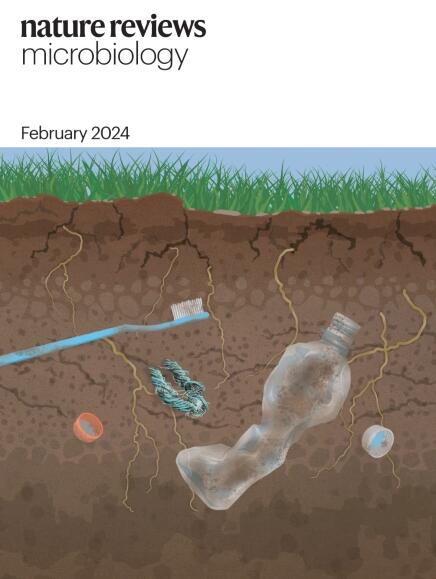铜绿假单胞菌:生态学、进化、发病机制和耐药性
IF 103.3
1区 生物学
Q1 MICROBIOLOGY
引用次数: 0
摘要
铜绿假单胞菌长期以来一直是微生物学领域的模式生物,特别是在基因表达、群体感应、抗生素耐药性、毒力和生物膜形成等方面的研究。它的遗传可追溯性促进了对复杂调控网络和实验进化的理解。这种细菌的多功能性源于它的基因组变异性、代谢灵活性和表型多样性,使它能够在不同的环境中茁壮成长,既可以作为无害的腐生植物,也可以作为机会主义的人类病原体。铜绿假单胞菌可引起急性和慢性人类感染,特别是在有潜在免疫缺陷的患者中。它固有的抗生素耐受性和耐药性,以及它在迅速适应感染条件的同时产生多种毒力因子的能力,构成了一项重大的临床挑战。在这篇综述中,我们探讨了铜绿假单胞菌的生态和致病多样性的关键特征。我们研究了群体感应和生物膜形成的分子机制和生态和进化意义。我们探讨了P. aeruginosa的毒力策略和体内适应性决定因素,以及进化动力学和全球流行病学,重点是抗菌素耐药性。最后,我们讨论了控制铜绿假单胞菌感染的新策略,并解决了该领域的突出问题。本文章由计算机程序翻译,如有差异,请以英文原文为准。


Pseudomonas aeruginosa: ecology, evolution, pathogenesis and antimicrobial susceptibility
Pseudomonas aeruginosa has long served as a model organism in microbiology, particularly for studies on gene expression, quorum sensing, antibiotic resistance, virulence and biofilm formation. Its genetic tractability has advanced the understanding of complex regulatory networks and experimental evolution. The versatility of this bacterium stems from its genomic variability, metabolic flexibility and phenotypic diversity, enabling it to thrive in diverse environments, both as a harmless saprophyte and an opportunistic human pathogen. P. aeruginosa can cause acute and chronic human infections, particularly in patients with underlying immune deficiencies. Its intrinsic antibiotic tolerance and resistance, together with its ability to produce multiple virulence factors while rapidly adapting to infection conditions, pose a major clinical challenge. In this Review, we explore key features contributing to the ecological and pathogenic versatility of P. aeruginosa. We examine the molecular mechanisms and ecological and evolutionary implications of quorum sensing and biofilm formation. We explore the virulence strategies and in vivo fitness determinants, as well as the evolutionary dynamics and global epidemiology of P. aeruginosa, with a focus on antimicrobial resistance. Finally, we discuss emerging strategies to control P. aeruginosa infections and address outstanding questions in the field. Pseudomonas aeruginosa is a functionally versatile bacterium, a leading opportunistic human pathogen and a model organism in microbiology. In this Review, Letizia, Diggle and Whiteley discuss P. aeruginosa’s quorum sensing, biofilm formation, virulence, epidemiology, resistance mechanisms and infection control strategies.
求助全文
通过发布文献求助,成功后即可免费获取论文全文。
去求助
来源期刊

Nature Reviews Microbiology
生物-微生物学
CiteScore
74.00
自引率
0.50%
发文量
149
审稿时长
6-12 weeks
期刊介绍:
At Nature Reviews Microbiology, our goal is to become the leading source of reviews and commentaries for the scientific community we cater to. We are dedicated to publishing articles that are not only authoritative but also easily accessible, supplementing them with clear and concise figures, tables, and other visual aids. Our objective is to offer an unparalleled service to authors, referees, and readers, and we continuously strive to maximize the usefulness and impact of each article we publish. With a focus on Reviews, Perspectives, and Comments spanning the entire field of microbiology, our wide scope ensures that the work we feature reaches the widest possible audience.
 求助内容:
求助内容: 应助结果提醒方式:
应助结果提醒方式:


